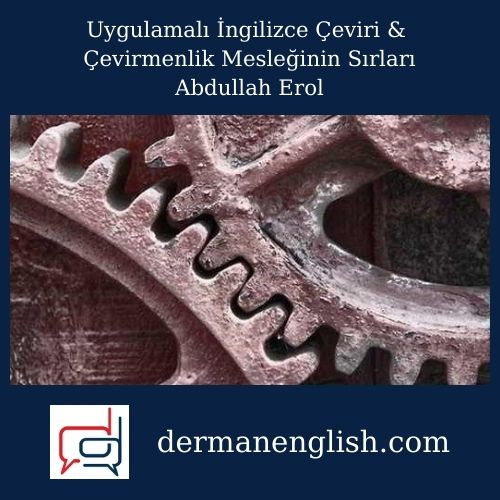English for Professional Emailing – James Aird
What you’ll learn
-
English for Professional Emailing
-
English for Business
-
English for Communications
-
Email Etiquette
-
English as a Foreign Language
-
English as a Second Language
Requirements
-
Learners should have lower-intermediate or above skills in ESL/English.
-
Learners should have the desire to quickly improve their emailing skills.
Description
In the English-speaking world, email is the preferred method of communication. Knowing how to email effectively is an essential skill. However, this area of English-language education all too often fails to keep up with the latest trends and developments, leaving students with an outdated, awkward and overly formal approach to emailing. This course aims to equip students not only with knowledge but also with the tools they need to stay flexible and professional in any email situation.
Master English for Emailing With This Comprehensive Course
- An overview of the basics
- Compose properly structured emails
- Understand context
- Learn most commonly used phrases
- Learn proper formatting
- Become competent in essential spelling, grammar and punctuation rules
- Become proficient in email etiquette
- Know which style/tone to use for which situation
- Get real feedback on your email writing skills
Your emails are a reflection of you. Badly written emails can prevent you from getting a promotion, a raise, or a new job. Using casual instead of formal language can be embarrassing and make you look uneducated. In other situations, overly formal emails signal to the reader that you don’t have a solid understanding of context or tone.
By the end of this course, you will know how to write clear, polite and effective emails for any situation. This will make you stand out from other people sending emails because you will know what most of them — even native English speakers — do not.
Contents and Overview
We’ll start with an overview of the basics. You’ll learn how to create a professional email address and signature file, how to set up your inbox, and how to pronounce/transcribe email addresses
After the basics, you’ll learn about subject lines — why they’re absolutely essential and how to write them effectively so that your emails actually get opened and read.
Moving on, we’ll cover the structure of a typical email, breaking it down into three parts:
The Beginning: which greeting to use, depending on the situation and number of recipients.
The Middle: how to structure the actual message, by writing a proper introduction, developing the email’s main idea with details and then concluding.
The End: the most common closings and the situations to which they apply.
Having achieved a solid understanding of these basic principles, you’ll look at the most common types of email messages. You will learn:
- How to introduce yourself in an email
- How to make and respond to requests
- How to make announcements
- How to apologize
- How to make and confirm arrangements
You’ll learn how to use English politely, especially when making requests, and you’ll learn how to use email as a scheduling tool, with a focus on correctly talking about dates and times.
Then, you’ll learn about what comes after the writing of an email: finding and correcting mistakes. We’ll cover six the most common mistakes made by native and non-native speakers alike and learn how to fix errors that a spell check would miss. We’ll also cover the most important elements of punctuation and how to use them correctly so that your messages are clear and effective.
After learning these fundamental rules, you’ll explore the differences between American and British English and you’ll become familiar with the most common email expressions and abbreviations in use today. We’ll also go over if and when to use those expressions and abbreviations, depending on the situation.
Most importantly, you’ll learn the basic principles of an effective writing style, so that your messages are clear, confident and easy to understand. With the same goal in mind, we’ll also look at how to properly format an email, an often-neglected area of email instruction.
In the final section, you’ll learn about context. This means understanding what tone is appropriate, depending on the situation. You’ll be able to differentiate among various levels of formality and you’ll know which level to use depending on the context. We’ll also look at different cultural communication styles and how to take them into account as you email.
Throughout the course, you will complete a wide range of quizzes and assignments, to test and solidify what you’ve learned.
Once you’ve completed English for Professional Emailing, you will not only know how to write clear, effective and professional emails, but you will also have a set of tools that you can use as you continue to strengthen your English-language skills. You will know how to write with clarity and confidence, a crucial skill in the 21st-century workplace, and you will make a good impression on your friends, colleagues and co-workers.
Who this course is for:
- English as a Foreign Language students (ESL, EFL)
- Students who are interested in learning English for specialized purposes and business.
- Professionals who need to improve their emailing skills for work.
- Students who need to improve their emailing skills for college/university.
- International professionals.
STUDENT FEEDBACK AND REVIEWS
Ali Ahmed: The course was excellent in everything, Documents, Videos, and Quality of materials. And Mr. Candy was friendly and helpful. Thank you a lot!
Meqdad Darweesh: It’s a good and informative But it’s textual more than visual, so this make me feel bored during the sections
Aram Ali Ahmed: As an English Language instructor, I love this course. James is doing such a great job in explaining the whole process of email writing in detail. I recommend this course to anyone regardless of where they work.
Akash pathak:This course is really good and understandable for all people
For reaching more review, you can click to this link.
ABOUT INSTRUCTOR
James Aird
Hi! My name is James and I am a learning professional with over 5 years of experience in ESL education, along with English education for government and private sector clients. I hold a Master Degree of Education from Harvard University, and I am committed to advocating for accessible life-long learning.
ABOUT UDEMY
This course is a Udemy course. We created a page that included frequently asked questions we receive about Udemy. For going on the page, please click here.



























Reviews
There are no reviews yet.